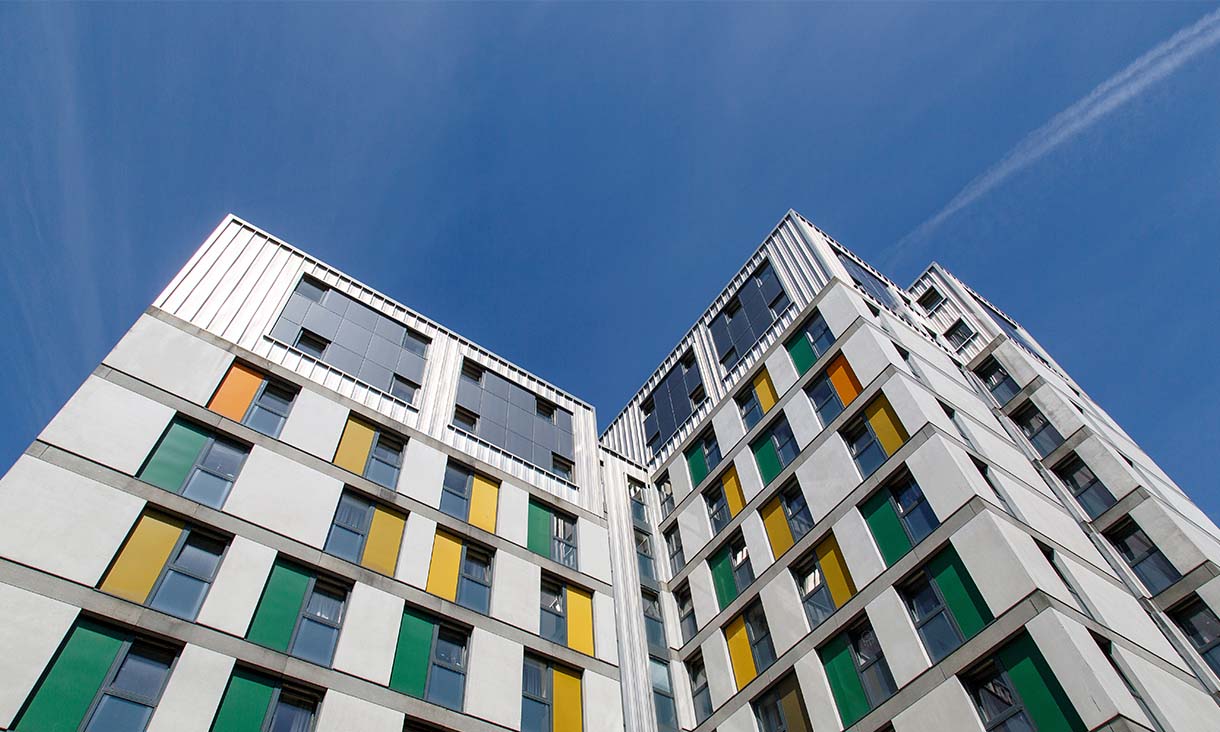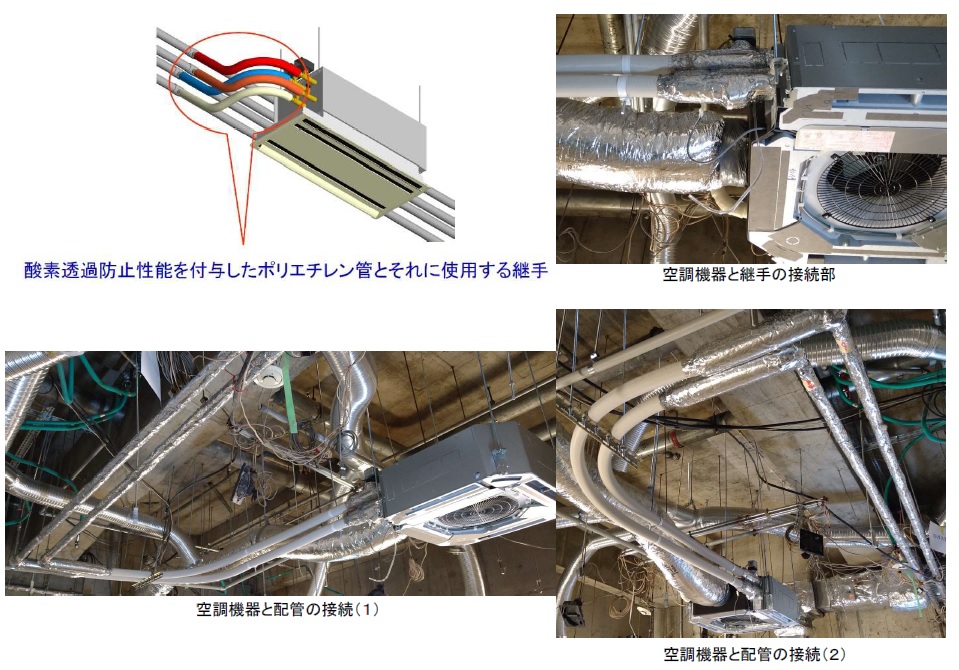エンジニアは、リサイクルガラスを使用した新しい防火建材を開発し、主要な廃棄物の流れに対処する有望な循環型経済ソリューションを生み出しました。 Engineers have developed new fire-safe building claddings using recycled glass, creating a promising circular-economy solution to address a major waste stream.
2023-03-09 ロイヤルメルボルン工科大学(RMIT)
 Building claddings play a key role in preventing the spread of fire, particularly in high-rise buildings. Image: Adobe Stock
Building claddings play a key role in preventing the spread of fire, particularly in high-rise buildings. Image: Adobe Stock
この技術は、廃棄物の処理と同時に建設業界での使用が期待されており、130万トン以上のガラスが埋め立て場に埋められることを減らす可能性がある。
この技術は、アルミニウム製の建築材料よりも安く、軽く、強度があり、防火性が高いため、高層ビルのクラッディングに適している。また、リサイクルガラスを大量に使用することにより、環境的、経済的、社会的利益をもたらす。技術は現在特許出願中で、RMITと協力して大規模生産能力のトライアルが行われている。
<関連情報>
- https://www.rmit.edu.au/news/all-news/2023/mar/circular-economy-cladding
- https://www.sciencedirect.com/science/article/abs/pii/S095006182203238X
- https://www.sciencedirect.com/science/article/abs/pii/S0950061821032773
ビルディングクラッディング用建設資材の耐火性:批判的レビュー Fire compliance of construction materials for building claddings: A critical review
T. Thevega, J.A.S.C. Jayasinghe, D. Robert, C.S. Bandara, E. Kandare, S. Setunge
Construction and Building Materials Available online: 11 November 2022
DOI:https://doi.org/10.1016/j.conbuildmat.2022.129582
Highlights
- •Measures of improving fire compliance for building claddings were identified by capturing key factors driving fire.
- •Required fire tests were summarised from relevant standards for evaluating the fire performance.
- •Performance of numerical modelling was compared to experimental data to identify strengths/limitations of modelling to simulate claddings subjected to fire.
- •Effect of different material types use on fire spread was summarised to identify suitable materials for non-combustible claddings.
- •A compliance pathway was proposed to satisfy fire requirements for cladding systems considering different building types.
Abstract
External claddings have been identified as a more critical component in buildings than before due to many catastrophic fire incidents that occurred in recent decades. Present-day engineers seek claddings with improved fire performance to satisfy state/government mandates against fire hazards. It is challenging to cater to the increased cladding demand using conventional materials while observing circular economic principles. As such, researchers and materials engineers have been paying more attention to identifying alternative cladding products. This challenge is further exacerbated due to the limited understanding of fire performance and compliance requirements of building claddings by practitioners. This review provides a detailed assessment of building claddings that satisfy compliance for non-combustibility. The review first summarizes the relevant experimental fire test standards and compares them to theoretical/numerical fire modelling and simulation results based on studies reported in the literature. The effect of different cladding materials on fire spread is then explored by discussing desirable material characteristics that are essential for the development of cladding systems with adequate fire performance. Finally, a compliance pathway that satisfies the fire requirements for cladding systems is discussed leading to the proposition of engineering processes and tools for assessing the suitability of cladding materials for different building types. This review paper will benefit the building and construction industries by helping practitioners understand the fire performance and compliance requirements for fire-resistant cladding materials ahead of their introduction into buildings.
ガラス廃材をリサイクルして建築部材にする新技術を開発 A new technology of transforming recycled glass waste to construction components
Dilan Robert, Edwin Baez, Sujeeva Setunge
Construction and Building Materials Available online: 11 November 2021
DOI:https://doi.org/10.1016/j.conbuildmat.2021.125539
Highlights
- •A new use of recycled glass was identified, thus creating a market for glass wastes.
- •A novel technology was investigated to utilize glass wastes for building components.
- •Optimum mix design of new composite was explored through a detailed test plan.
- •Novel technology has been verified for drainage pit lids following performance tests.
- •New technology is highly sustainable and adoptable for other engineering applications.
Abstract
Millions of tonnes of glass wastes are produced worldwide, but only marginal is fed back into recycling with majority ending at stockpiles. Though glass wastes are used in the construction industry since decades, there still exists need to recycle this valuable waste product which otherwise could result environmental concerns from excessive stockpiles. This study investigates for a new technology that utilizes recovered glass wastes to manufacture building components using access covers as example, thus introducing a new market for glass wastes. The new technology is based on fine recycled glass in encapsulation of polymeric thermosetting materials from cross linking reaction of resins. First, a series of laboratory tests (i.e. compressive, flexure and impact resistance tests) were performed on composite samples prepared under different glass-composite formulations, glass particle sizes and curing periods to investigate the behaviour of novel glass recycled composite material. Results of sample tests were analysed to identify an optimised mix design for recycled glass composite material. Having identified the optimum dosages, studies were then extended to identify lab manufacturing process for access cover prototype. A special clamping method was adopted to manufacture the access cover using stagewise manufacturing process under optimum formulations. Performance tests conducted following AS3996 revealed that the lab-based access cover can support an external load of up to 4 tonnes which can be further enhanced using geometric optimization. This study provides detailed description of translating glass wastes to manufacture sustainable building components using a unique glass recycling technology which has potential to utilize in broader civil engineering applications.



